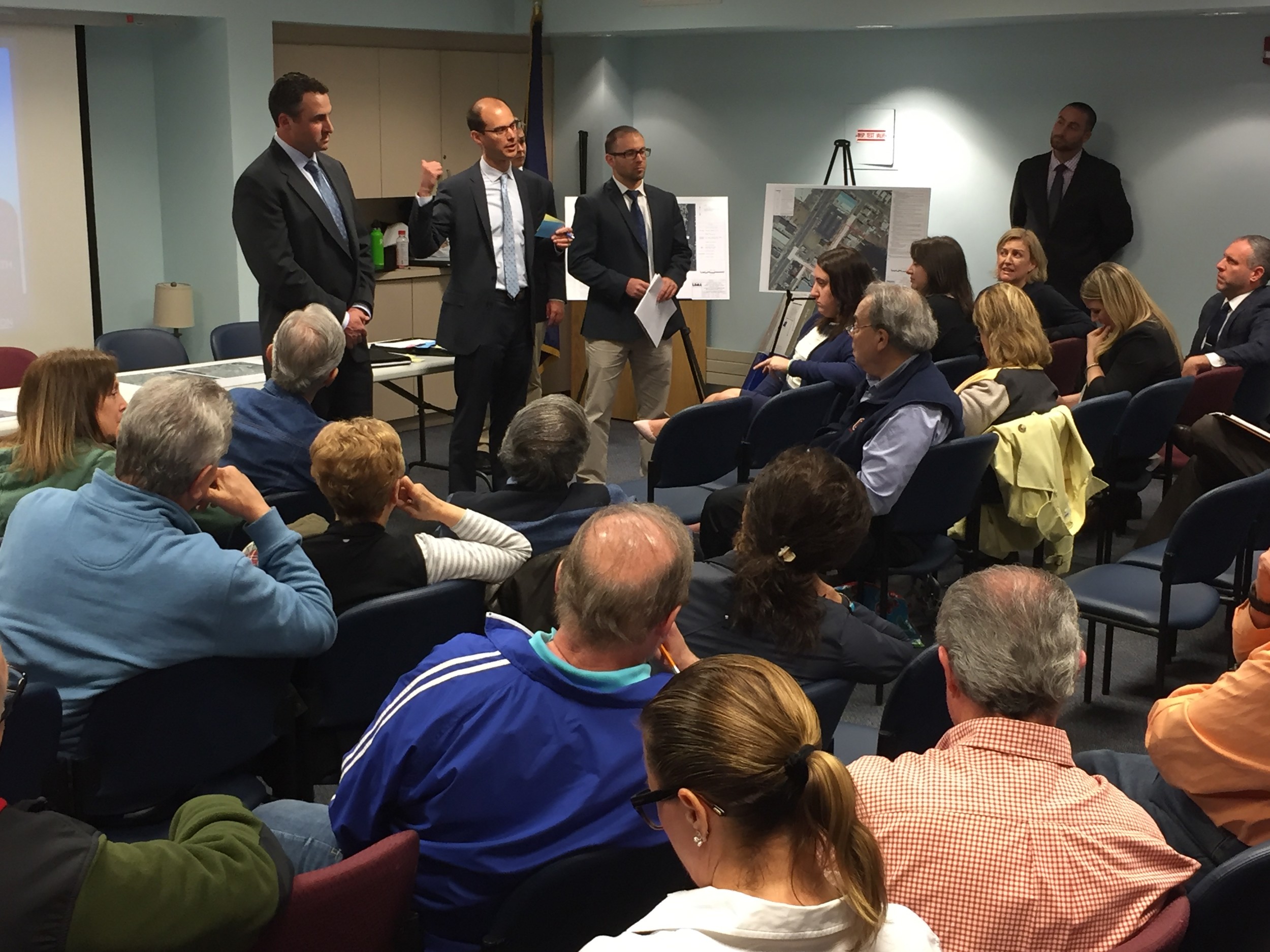Friday, April 26, 2024
 39.0°,
Fair
39.0°,
Fair
Residents, officials discuss I.P. drainage projects
Representatives from county, GOSR visit library, detail flood mitigation upgrades
Construction on seven storm drainage projects in Barnum Island and Harbor Isle could begin next year, according to representatives of Nassau County’s Department of Public Works and the Governor’s Office of Storm Recovery, who met with residents at the Island Park Library on April 26 to detail the efforts.
The event, hosted by State Sen. Todd Kaminsky and Nassau Legislator Denise Ford, outlined high-priority projects to reduce flooding throughout Island Park, which was hit hard during Hurricane Sandy more than four years ago, and continues to flood during high tide and rainy days. The plans involved raising roads, increasing the size of drainage pipes and installing dozens of check valves around the area.
The seven projects — five in Barnum Island and two in Harbor Isle — are currently in the design phase, and were selected from 26 projects outlined in the Community Reconstruction Plan, which was published in 2014. Collectively, all projects in the plan would cost about $42 million to implement. Because there is currently only $10.5 million in Community Development Block Grant funding available, the county, the Town of Hempstead and GOSR had to prioritize which areas to address first.
The incorporated village of Island Park was not included in the study, as it is not under the county’s jurisdiction.
“Everybody’s area and street are equally important,” Sean Sallie, planning division supervisor for the Nassau Department of Public Works, told the few dozen residents in attendance, “but when we’re dealing with the reality of a defined budget…we’ve got to go through this process, and it’s not easy.”
The drainage study area, which examined 41 drainage systems across about 350 acres of land, pinpointed streets along the California Canal, as well as those near Lincoln Orens Middle School and at the southern end of Harbor Isle — including portions of Sheridan Place, Island Parkway South, Washington Avenue and Island Park Place — as needing to be raised. The roads would be elevated anywhere from six to 18 inches, according to Robert Steele, a consultant engineer with L.K. McLean Associates, above the average level of severe high tides.
Other projects called for the installation of more check valves at drainage outflows, which are designed to prevent tidal surges from backflowing onto roadways, as well as increasing stormwater capacity by widening drainage pipes. For example, road raising on Baker Court — labeled as one of the worst flooding spots — would occur in conjunction with upgrading the drainage capacity on Austin Boulevard.
But some residents questioned the road-raising proposals, concerned that elevating the road would result in drainage water flowing onto their properties. Officials said that in certain cases, yard drains with backflow prevention devices would be implemented to prevent the water from reaching residents’ homes.
California Place resident Patti Ambrosia, a member of the Island Park Civic Association who has been advocating for funding from NY Rising to rebuild the bulkheading on her street, contested that without bulkheading, high tides from the canal would cripple the foundation of the raised road.
Laura Munafo, deputy director of Nassau’s community reconstruction program, said that the Department of Housing of Urban Development would not fund the bulkheads, which sit on residents’ properties across the street from their home. Steele said raising the roadways would help mitigate flooding, but added that precautions, such as additional sheeting, for example, could be added if deemed necessary to preserving the foundation of the street.
Chris Horvath, a member of the community reconstruction planning committee, said he was impressed with the presentation and approved of the plans to raise the roads, but added that the process to implement them has dragged on. “They listened to us,” he said after the meeting. “They did exactly what we told them to do, but it took three years to get there.”
Others pointed to areas not included in the seven projects that experience flooding, including Delaware Avenue, which Kaminsky said could be addressed more thoroughly in future meetings.
“When I talk to people in Island Park, people rightfully think no one is looking and nobody cares,” Kaminsky said. “I think tonight is showing that that’s not true, thankfully.”
“Is it perfect? No,” he continued. “Are we going to keep fighting to make this better? Yes. Help’s coming.”
HELP SUPPORT LOCAL JOURNALISM
The worldwide pandemic has threatened many of the businesses you rely on every day, but don’t let it take away your source for local news. Now more than ever, we need your help to ensure nothing but the best in hyperlocal community journalism comes straight to you. Consider supporting the Herald with a small donation. It can be a one-time, or a monthly contribution, to help ensure we’re here through this crisis. To donate or for more information, click here.
Sponsored content
Other items that may interest you







